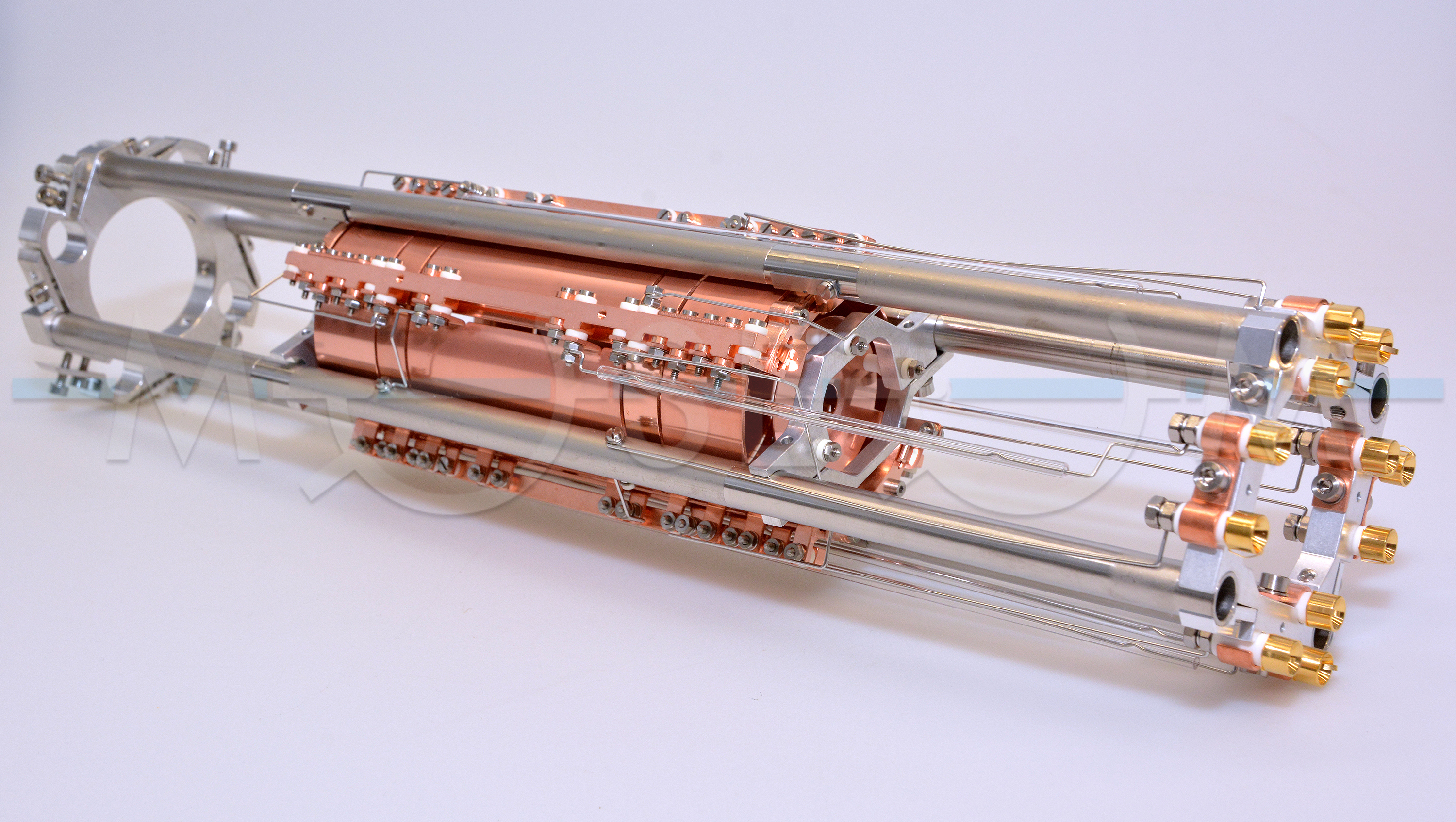Categories of exhibits
ICR Grid Cell
Exhibit no. 602
Fourier-transform ion cyclotron resonance mass spectrometry uses cyclotron frequency of the ions in a magnetic field for determining their mass-to-charge ratio.
Ions are introduced into a Penning trap, which uses static electric and magnetic fields to trap and store ions. The trap contains trapping, excitation, and detection electrodes. A uniform magnetic field confines the ions in directions perpendicular to the magnetic field, whereas static electric fields prevent the ions from leaving the trap along the magnetic field axis. An RF voltage is applied to the excitation electrodes to excite the trapped ions to a larger orbital radius. When the excitation is high enough so that the ions will pass close to the detection electrodes, a small current is induced. Since the ions have different cyclotron frequencies depending on their m/z, each generated current frequency corresponds to a certain m/z.
Pictured is a grid cell of LTQ FT Ultra (Thermo Electron Corporation). It was located in the center of an actively shielded superconducting magnet with a field strength of 7 Tesla. The cell uses grids to improve the homogeneity of the excitation field and thus enhance the mass accuracy of the instrument. The grids are placed inside the cylindrical electrodes over the entire length of the ICR cell. The excitation waveforms are supplied to these grids so that the excitation field extends well past the trapping region. According to the LTQ FT specifications, a mass resolution was 100 000 FWHM at m/z 400 at a scan repetition rate of 1 second (maximum resolution > 500 000 FWHM), and the mass accuracy was 2 ppm RMS with external calibration. The LTQ FT Ultra Hybrid FTICR has been launched in 2006.





